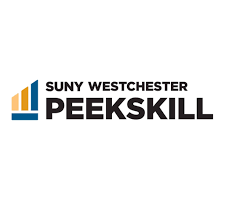
Inside the Cyber Classroom
“Marcus Academy” opened its doors this past Monday, as my son Brody Marcus began his first day of distance learning. He is a sixth grader at Blue Mountain Middle School in Cortlandt Manor.
When Brody and I sat together, we agreed the first place to start would be his school email account.
Each of his eight teachers had sent an email. The messages explained their expectations for the week, and previewed the forthcoming assignments.
My first day as a middle school “remote” teacher was underway.
Kudos to Hendrick Hudson School District
I was impressed with how well Brody adapted, embracing the experience. Much credit goes to the Hendrick Hudson School District, which quickly organized itself for this “alternate” reality prior to the school closures.
Despite the District’s not having much time to prepare, our experience has been virtually seamless.
Brody misses interacting with peers and teachers, but finds time to socialize via FaceTime, videogames, and Google Classroom. Having a child who understands the magnitude of the situation helps a great deal. He misses his friends, but he knows we must do our part to mitigate further outbreak of the virus.
Jaime Marcus is an experienced online instructor
Meanwhile, in the adjoining room, my husband Jaime Marcus was eagerly working on 9th-grade English lesson plans for the 98 students he teaches at Ardsley High School.
Jaime has been teaching for 22 years, the last 17 in the Ardsley School District. He also has been an online instructor for various teaching centers.
I asked him about the crash course in Distance Learning — or Continual Learning, as Ardsley calls it — that local students, teachers and parents are getting in the wake of the novel coronavirus.
What do you call the current method of teaching?
The Ardsley District is calling it Continual Learning. The idea is despite not physically being in school, you still have to learn. I expect my students to devote almost the same amount of time to their school work as they would in the classroom. As a teacher, I will be available to answer their questions if need be through email. I don’t feel teachers must be live to be supportive of their students. I want to make sure the work I assign is meaningful, and should take between 30-50 minutes a day to complete.
What platforms are you using to communicate with your students?
For several years now, I have been relying on Google Classroom (GC) to teach my students, and I will continue to do so remotely. I am able to leave comments for my students via GC, and in hindsight I think this was an effective way to launch distance learning. I started teaching To Kill a Mockingbird to my students before the health crisis, and the experience has not been negatively impacted so far. I have posted a few relevant videos so students may post comments and that will foster a really good discussion for all of us. The students can see each other’s comments and I am able to provide live feedback.
What training did your district offer and how long was the training?
Ardsley offered individualized training in person with the head of Technology and our Director of Curriculum. They trained staff in GC and Zoom, while fellow colleagues offered training in Flipgrid. Since I have been using GC for some time with my students and I am tech savvy, I did not pursue any training from my district. All I really needed was clear rules and expectations from Administration, and I was able to create my lesson plans. I appreciated Administration’s trust in our proficiency with technology. Moving forward, I would like to know my District’s stance on administering exams or major writing assignments while in the Continual Learning phase.
Flipgrid could make my teaching more dynamic
Has this experience enhanced your teaching?
Actually, I never used Flipgrid but after speaking with colleagues, I think I will incorporate it into my lesson plans. Flipgrid will allow my students to submit two minute videos in response to a chapter rather than answering questions. It could make my teaching more dynamic.
What was the initial reaction of students?
As you can imagine, some students are a bit anxious and do not want to fall behind, so I have been allaying their concerns through email. However, since we already use GC, there has not been a transition period or steep learning curve.
What are the advantages (if any) vs. classroom teaching?
I think it forces teachers to be as clear, thorough and conscious of time more than you might be in the classroom. Also, you really have to be deliberate in what resources you will use. For example, I had three videos I showed on GC that equaled 30 minutes and then I would allow 10-15 minutes for discussion. However, in the classroom, I would have not been as structured because I would just allow the discussion to flow.
What are the disadvantages (if any) vs. classroom teaching?
You can’t pause a video and give your insight. I am currently teaching To Kill a Mockingbird, and I know which parts are important for literary devices or vocabulary, but I can’t currently say, “Let’s stop here and talk about it.” Instead, with Continual Learning, I may start a class with a short video instructing students on what to watch for in an upcoming chapter.
The further you get from in-person teaching,
the further you get from optimal learning
Which subjects are easiest to teach this way? The most challenging?
English is one of the easiest because it’s predicated on discussion, and kids can independently read more than they can with Science and Math. I imagine specialized classes like Physics, AP Chemistry, and Calculus present the most challenges because there is so much hands-on learning. Those classes rely on lab work and college level material that needs to be broken down. Also, if a student falls behind one or two days because they don’t understand something, there could be a precipitous drop in processing or grasp of material.
Can students interact with each other or only with the teacher?
In Google Classroom, I have the capability to share documents and do peer editing. Flipgrid allows students to read their essay out loud and get feedback. I have not implemented Flipgrid yet, but I think it would be a good resource for a future assignment.
What kind of group activities are eliminated — where students interact with each other — that would normally be done in the classroom?
The week before my schools closed, my students were working in groups,tasked with writing plays loosely based on Romeo and Juliet. They were supposed to perform the plays this past Monday. I need to explore whether they can share a call with me on a platform like Zoom where I may hear each person play their role, but that is not the same as being in the classroom using props and physical space. I love teaching and social interaction, so this is tough for me, but I will do my best to compensate for that loss by doing group work.
Do you think Distance Learning will continue beyond the current health crisis?
I think it is nice to know there is a contingency plan should there be a natural disaster or snowstorm. But nothing can replace in-person teaching. I have enjoyed teaching online classes at a graduate level, but I still value face to face interactions with people.
Any further thoughts?
The longer we do remote learning, the more likely the level of education is going to falter. I have confidence staff and students will do their best, but the further you get from in-person teaching, the further you get from optimal learning. Nothing can replace in-person teaching. However, whatever the outcome, it will be an equal playing field nationally.
Lindsey Marcus, who lives in Croton-on-Hudson, is education coordinator of River Journal North.







